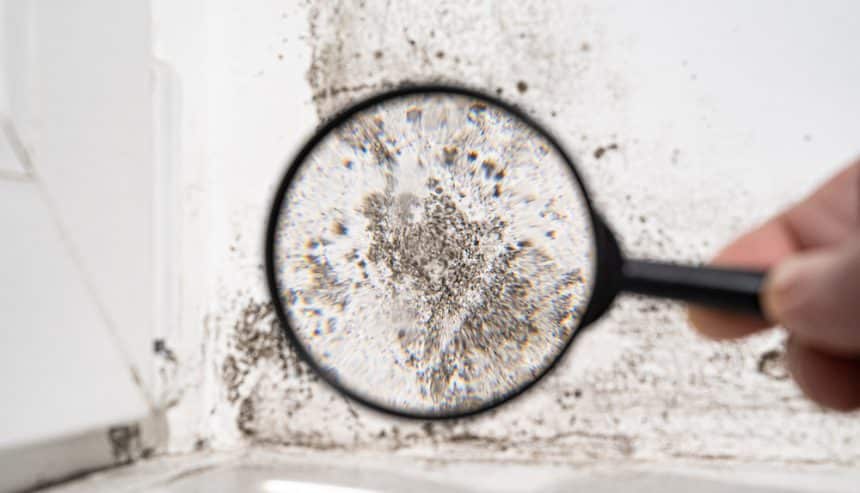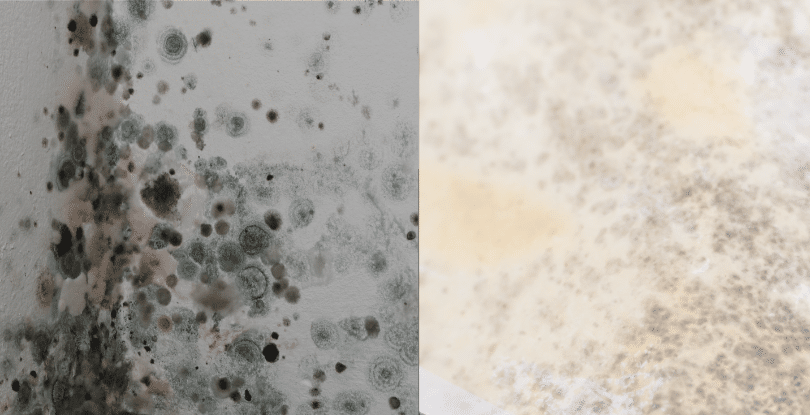Debunking Common Myths and Misconceptions About Mold
Mold is not an uncommon problem for homes, buildings, and indoor environments. It can cause some significant health issues and a lot of damage and expense. However, there are many myths about mold that only serve to perpetuate misunderstandings about this complex issue and its solution. So, let’s tackle some of the most common myths about mold, and the misconceptions that come with them.
Myth 1: Bleach Kills Mold Effectively
The most common myth about mold is that bleach kills it. Bleach will kill mold on nonporous surfaces temporarily, but it will kill mold growing in drywall, wood or in fabric. Bleach doesn’t fix moisture problems, and those issues must be addressed before mold returns.
Debunking the Myth:
Bleach is a strong chemical that releases toxic fumes and is unsafe to use improperly. Bleach fumes are toxic to the respiratory system and can be exacerbating for pre-existing respiratory illnesses such as asthma.
Bleach won’t soak into porous material, so you might be killing surface mold but still leaving fungi growing further under the surface.
– Bleach is an insufficient treatment for mold as it may promote mold regrowth; it adds moisture to porous materials and provides nutrients for mold spores.
Instead, they are encouraged by home-repair experts to use specific products and techniques created for killing mold. These are safer, more effective and less likely to injure occupants, or to exacerbate a mold problem.
Myth 2: Mold Only Grows in Dirty Homes
A second misperception about mold is that it’s a problem unique to filthy, disorganized homes. In reality, we can have a lot of mold in any home where moisture and warmth meet organic materials they can ‘eat’ – cleanliness has little to do with it. Even the tidiest homes can have mold problems if conditions are right for mold growth.
Debunking the Myth:
As mold spores are prevalent in the outdoor environment, they can find their way indoors through windows, doors, HVAC systems, and other openings, and take root (ie, grow and flourish) if conditions are suitable.
– Moisture is the catalyst for mold growth, and even well-kept homes can fall victim to the unseen enemy if moisture issues lurk, such as leaky drips, condensation or humidity.
It can grow on any surface, from drywall and wood to carpeting and upholstery, and everything in between (including insulation, no matter how clean or dirty the environment).
Homeowners concerned about mold growth should be focused on moisture control and improving ventilation and air quality, as well as promptly fixing any leaking or condensation issues. This can reduce the chance of any hidden mold problems developing into larger issues.
Myth 3: Mold Remediation is a DIY Job
DIY mold remediation might be tempting to some homeowners: after all, if the problem is localized and small, it’s an easy project to conduct on a DIY basis. But extensive mold problems and specialized situations call for more sophisticated mold remediation.
Debunking the Myth:
Restoration involves more than merely cleaning up what can be seen of the mold growth; it requires a grasp of the biology of mold, the correct procedures for restoration and the safety issues associated with the work.
– Bad remediation efforts can exacerbate mold issues by spreading spores to unaffected areas or allowing underlying moisture problems to remain.
Mold remediation professionals have the training, certification and equipment to safely and effectively remediate the situation. They are qualified to identify mold, contain the contaminated area, and safely remove the growth to reduce the risk of exposure.
While detergent and water can be used to clean visible mold from non-porous, small surfaces, larger or more significant infestations should be remediated by a professional due to the amount of work needed and the health risks and property damage that can occur over time. Hiring a professional mold remediator helps to ensure proper remediation and minimize risk of exposure to both property and people.
Myth 4: Mold Remediation is Only Necessary if Mold is Visible
Most homeowners express the belief that remediation is not required if they are unable to see the mold. However, mold can grow in hidden locations such as behind walls, ceilings, and underneath floorboards, which makes it difficult to ascertain whether remediation is necessary without further professional consulting. Even if mold is not visually evident, its presence can still be indicated by damp or musty odors, as well as underlying moisture problems.
Debunking the Myth:
– a musty odor, water stains, or other evidence of water damage might be indicative of hidden mold growth, even though the mold is not visible to the eye. These signs should not be ignored but might require closer investigation by a professional in mold remediation.
These professional services should include performing a thorough visual inspection to detect areas where mold is hidden from view, as well as a moisture survey to detect underlying moisture issues that would be invisible to lay people. Early detection and correction are vital to preventing mold problems from becoming more serious and pervasive.
Mold is not always visible. In fact, homeowners should look beyond what they can see to ensure their mold remediation was done thoroughly and properly. If a homeowner sees or smells signs of a moisture problem or musty odors, it is wise to take immediate steps to investigate and correct the problem. Homeowners should consider hiring an indoor environmental professional to perform mold inspection and testing to find hidden mold growth and appropriately address it.
It is important that we dispel myths and misconceptions surrounding mold in order to better educate the public about this much-maligned and misunderstood problem. By exposing the absurdity of claims such as: ‘Bleach kills mold’; ‘Dirty houses have dust, and dust has mold’; ‘mold is easier to remove than the stains it causes on drywall or shingles’; and ‘mold is easy to detect because it starts as a visible growth on the surface of your home’, homeowners will be better equipped to prevent mold from forming and keep their homes healthier.
Homeowners interested in minimizing their home to mold can control moisture levels in their home and reduce indoor humidity, improve ventilation (especially in kitchens and bathrooms), fix water leaks immediately, and call a professional home inspector or mold remediation firm when needed to get rid of mold in homes. By sharing correct information on mold prevention and remediation, and by debunking common mold misconceptions, homeowners can protect their home and family from mold damage and related health impacts and risks.
Do You Have Mold Issues? If You Think You Do, Call Us Toll Free, 1-855-947-6167 – For a Free, No Obligation Quote by a Professional Mold Remediator Near You!




